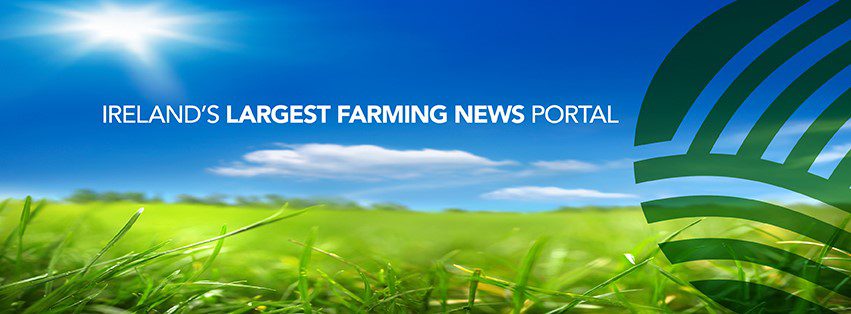The Nitrates derogation can help farmers in Northern Ireland develop their businesses and improve profitability.
‘Nitrogen (N) Loading’ is a key element in the Nitrates Action Programme (NAP) and is a measure of stocking rate which has an upper limit of 170kg nitrogen per hectare per year (kg N/ha/year) from livestock manure. Many farms that have a stocking rate above this limit have adopted different ways of lowering it through a combination of:
- Exporting slurry,
- Renting additional land,
- Reducing livestock numbers.
These are viable alternatives for reducing nitrogen loadings for up to five per cent and possibly 10 per cent over the 170 kg N/ha/year limit. However, they are increasingly expensive when nitrogen loading exceeds 200kg N/ha/year as shown in the example later in this article. So what’s the alternative?
The Nitrates Derogation option
If you have an N loading above 170kg N/ha/year you can apply for a nitrates derogation which will allow you to operate up to a limit of 250kg N/ha/year. The derogation is available if you keep cattle and sheep, but in practice it mainly applies to intensive dairy farms. You need to apply annually for this derogation and keep additional records. The deadline for applications this year is 1 March 2014.
Example – looking at different options for an intensive dairy farm
You are a dairy farmer keeping 100 dairy cows, 25 one and two-year-old heifers and twenty five zero to one-year-old heifer calves on 46 ha of eligible land. The average quantity of milk sold per cow per year is 6,600 litres and the cows are fed an average of 2.2 tonnes of concentrates per year.
The nitrogen loading for this farm is calculated at 234kg N/ha/year and the phosphate (P) balance is 8.5kg P/ha/year using a phosphorus content of 4.8 kg P/tonne for the concentrate inputs.
There are a number of ways you could meet the NAP requirements in this example.
Apply each year for a Nitrates Derogation
Apply for the nitrates derogation before 1 March each year and you can continue to operate with the same levels of livestock and area of land used. You need to keep additional records comprising a Fertilisation Plan and a Fertilisation Account. CAFRE offers training on how to keep these records yourself or you can employ a consultant to help with the records. You should allow an approximate cost of £200-£300 sterling for your own time or a consultant’s fee. Your farm must have at least 80 per cent of the agricultural area in grassland and have a phosphorus balance of no more than 10kg P/ha/year to be eligible for derogation. Up to three per cent of derogation farms are inspected each year.
Export slurry
To reduce the nitrogen loading to 165kg N/ha/year 1050 m3 (231,000 gallons) of slurry needs to be exported. This is about 60 per cent of the slurry produced by the herd and it would cost over £3,600 sterling to replace this slurry with chemical fertiliser. This cost does not include the cost of transporting the slurry to other farms, which could be substantial. Records must be kept of slurry exports.
Renting additional land
An additional 19 ha (47.5 acres) of land is needed to reduce the nitrogen loading to 165kg N/ha/year. The additional cost of renting this land at £250/ha sterling (£100/acre) would be £4,750 sterling, but could be much higher in individual cases. Suitable land may not be available nearby, and additional transport costs must also be considered. If land is rented and the land owner is claiming single farm payment on that land, control for nitrates needs to be transferred to you. To transfer control for nitrates a written agreement must be completed by the land owner and the farmer to give responsibility for nitrates to the farmer. Records need to be kept of control agreements and the land must be recorded on your single application form.
Reducing livestock numbers
You would need to cut livestock numbers by 30 per cent to reduce the nitrogen loading to 165kg N/ha/year. This could mean a reduction of 30 per cent in sales of milk. The fall in profitability would probably be greater than 30 per cent as many fixed costs would not reduce in proportion to the reduced herd size.
Conclusion
In this example, applying for a nitrates derogation is the most cost effective option to meet the regulations. Many farmers are currently not applying for the derogation but taking alternative approaches to meet the nitrogen loading limit. You need to consider how you want to see your farm business developing in the future as the nitrates derogation does allow farms to grow by allowing herd size to increase. This is an important consideration when considering a farm business’s future viability and profitability. As previously stated if you apply for the nitrates derogation you will need to keep additional records and have a good administration system to ensure that important deadlines are not missed.
If you need a nitrates derogation in 2014 you must apply to the Northern Ireland Environment Agency (NIEA) on or before 1 March 2014. Late applications will not be accepted. Application forms are available from NIEA at www.doeni.gov.uk/niea/water-home/agri_regs.htm and select nitrates derogation or by telephoning 028 9262 3189.
If you would like to discuss your options with a CAFRE Dairy or Beef and Sheep Development Adviser please call 0300 200 7843. If you are interested in attending a CAFRE Nitrates Derogation Information meeting, please contact Jennifer Ball at Greenmount Campus, CAFRE Tel: 028 9442 6879.
By Jason McFerran & George Mathers, College of Agriculture, Food and Rural Enterprise (CAFRE)
